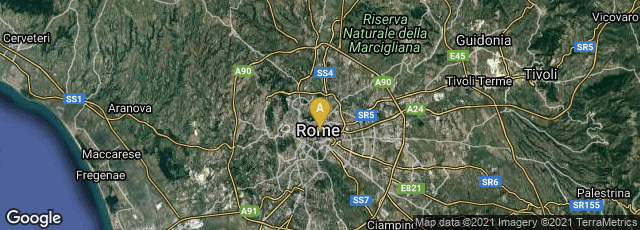

On August 24, 410 Goths, under Alaric I, captured and sacked the city of Rome.
"Because the barbarians had converted to Christian sect Arianism it was not a particularly violent looting with relatively little rape, murder and damage to buildings, but it still had a profound effect on the city. Many of the city's great buildings were ransacked, including the mausoleums of Augustus and Hadrian, in which many Roman Emperors of the past were buried. This was the first time the city had been sacked in 800 years, and its citizens were devastated. Tens of thousands of Romans fled the economically ruined city into the countryside, with many of them seeking refuge in Africa" (Wikipedia article on Sack of Rome [410], accessed 05-10-2009).
"We are told that during one siege the inhabitants were forced progressively 'to reduce their rations and to eat only half the previous daily allowance, and later, when the scarcity continued, only a third.' 'When there was no means of relief, and their food was exhausted, plague not unexpectedly succeeded famine. Corpses lay everywhere. . . .' The eventual fall of the city, according to another account, occurred because a rich lady 'felt pity for the Romans who were being killed off by starvation and who were already turning to cannibalism', and so opened the gates to the enemy" (Ward-Perkins, The Fall of Rome and the End of Civilization [2005]17).
¶ Some historians see this as a major landmark in the decline and fall of the Western Roman Empire.